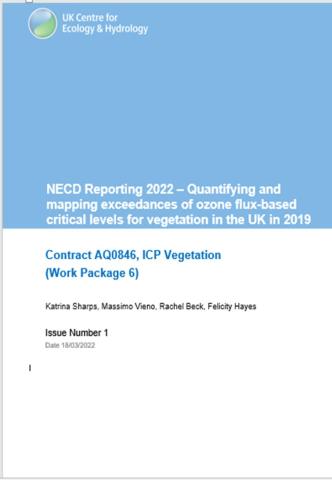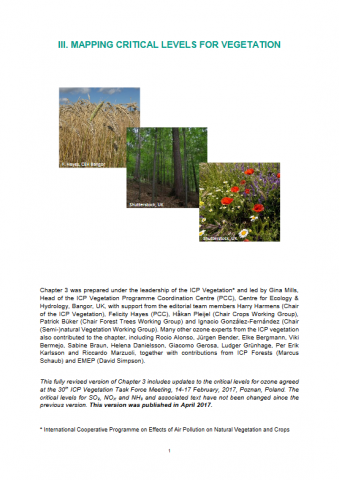Ozone biomonitoring
Since 1996, the ICP Vegetation has used white clover (Trifolium repens) to monitor impacts (for example leaf damage, biomass reduction) of ambient ozone concentrations on crops according to a standardised protocol. In 2008, a new biomonitoring system was developed for ozone, using French bean (Phaseolus vulgaris). Since 2015, the bean biomonitoring system has been included in a wider experimental protocol for recording the presence/absence of ozone injury using the smart-phone App or online recording form, in combination with the establishment of gardens of Sensitive Ozone Species ('SOS'). In 2020, we provided some further detailed guidelines for bean biomonitoring, particularly for growing beans in hot climates.
To submit data from ozone biomonitoring and/or "Ozone gardens," please download the spreadsheet template for recording the severity of ozone injury symptoms. If you have any accompanying ozone, climate and light data available, please also download one of the following relevant spreasheet templates:
Light intensity available as PAR
Light intensity available as W/m2
Please submit data to Felicity Hayes (fhay@ceh.ac.uk)
Monitoring for ozone injury using vegetation surveys
Guidance for surveying for ozone injury on different vegetation types, including crops, trees and grassland is available in the "Protocol for assessing ozone injury using vegetation surveys," produced in 2022. Following these methods will help to provide evidence of the geographical extent of damaging effects of ozone pollution on vegetation, based on presence/absence of ozone injury symptoms on leaves. Survey results will also allow the severity of the impact of ozone pollution to be determined, based on the extent of ozone injury of specified sensitive species.
This protocol provides information on the best time to carry out surveys, how to choose a suitable location/plot, equipment needed and the details to record. There is also useful background information on how to identify ozone symptoms (with example photos), and guidance on how to characterise the % of ozone injury per leaf. It's also important to be aware of other possible causes of leaf damage and the protocol provides tips on how to distinguish these from ozone injury.

